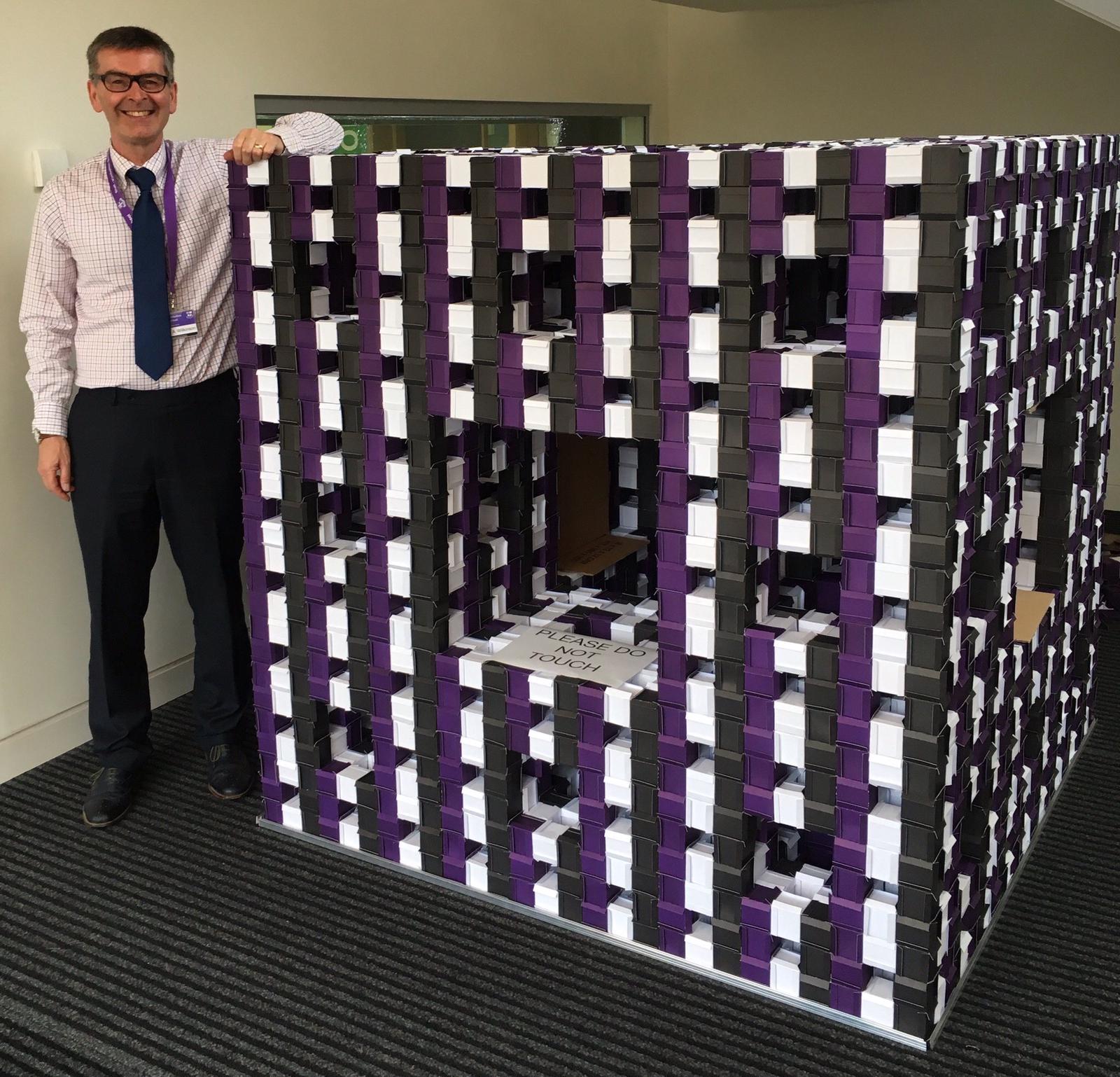
Menger Sponge
One of the unexpected joys of becoming a teacher after years working in the City is that work-related training courses have gone from being something I dread to something I look forward to. I attended a course run by NRICH in 2016 that had a session with a topologist (a mathematician specialising in properties of geometric objects) about an object called the Menger sponge. We were taught how to build a model out of business cards (I have plenty of these floating around!) and she even gave out packs of cards from a model she’d disassembled for us to take home and make a start with.
The session really grabbed my imagination: the structure looks so magnificent and – in this case – is built only with interlocking folded cards. No glue or any other support is required.
A hypothetically complete Menger sponge is a fractal with zero volume and infinite surface area. Given this description it’s almost impossible to imagine what it might look like but the sponge was first described by Karl Menger in 1926. A fractal is a shape that looks the same at different scales: zoom in and you see exactly the same pattern that you saw on the previous larger scale. This property is called ‘self-similarity’.
The best way to imagine a Menger sponge is to begin with a solid cube (this is a Level 0) and take out a 1/3 sized cube from each of the six faces and also from the centre. This leaves a Level 1 Menger sponge, made up of twenty smaller Level 0 cubes. Repeating this process with each of the smaller Level 0s and then again with the smaller still Level 0s creates a Level 3 Menger sponge. It’s easier to show this with a diagram:

Since it’s not practical to make a Menger sponge in this way, we built outwards instead, with our Level 0 units each made from six cards. Twenty of these units were then slotted together (with no glue used) to make a Level 1. In turn, twenty Level 1s make a Level 2, and finally, twenty Level 2s were put together to make our Level 3 sponge. This took a lot of work by pupils in all years at my school and I think has somewhat detracted from my popularity with my colleagues!
The final Level 3 model contains 48,000 pieces of card. It was built in its display location because it is too big and fragile to move once complete. It’s protected by an acrylic box to prevent accidental damage.

The volume and surface area of a Menger sponge have fascinating properties as the level of the sponge increases. Click here to see a description of the maths that gives expressions for both of these.
If you’re interested in building a Menger sponge of your own, please see the following video clip that shows how to fold and assemble a 6 card Level 0 unit on which the whole model is based.